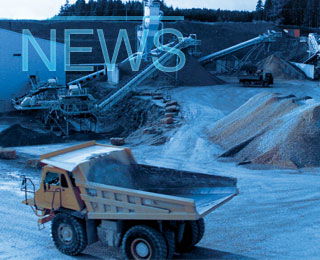This week it was announced that the Senegalese government would impose a new tax on the price of cement in the country of XOF3/kg or XOF3000 (US$4.84)/t.
There are just three cement producers in Senegal – Sococim (Vicat group), Société Cimenterie du Sahel (SCS) and Dangote Cement Senegal – and they are expected to raise cement prices to pass on the cost of the tax to consumers. The government's move is to help recover lost income from what they view as a highly profitable commodity.
Senegal's cement sector, however, has been transformed with the entrance Dangote which has pushed the market into heavy oversupply with cement production capacity rising to 8.2Mta versus local demand of 3.3Mt in 2015. Competition is intense and the new tax will place further pressures on the local cement producers whoare now desperately seeking export opportunities with varying degrees of success.
Cement output increased 10.2 per cent YoY in the 10M16. While Sococim and SCS have raised their production from 4.67Mt to 5.15Mt in this reported 10-month period, the increase was mainly driven by exports which were up 25.2 per cent to 2.38Mt in 10M16.
Keen to expand its overseas presence further, SCS also plans to build a new cement plant in Nouakchott, Mauritania, at a cost of EUR27.118m, while the company also enjoys strong trade with Benin. In Senegal SCS operates a 3.3Mta cement plant in Kirêne Dakar.
Dangote Cement Senegal began operations at its new 1.5Mta integrated Pout plant in December 2014, exacerbating the domestic oversupply situation. However, this factory is designed to be predominantly an export facility to Mauritania and Mali, where the company has plans to build a grinding unit. Reportedly, Dangote is already preparing for a second production line at the Pout facility, but this may be difficult to justify if the export markets do not offer sufficient off-take opportunities.
Indeed, Dangote has not found it easy to export from Senegal, with transport costs gradually rising. When Necotrans raised prices for handling costs at the Port of Dakar in July 2015, Dangote threatened to stop its investment in Senegal. High coal prices had already cut the producer’s margins.
Elsewhere, in the summer of 2016, Mali applied stricter standards to the import of cement to protect its domestic industry suppliers. This included a limitation of the truck weight down to 40t from 80t. Mali’s cement price is significantly higher than cement on the market in Senegal, making it an attractive destination.
Even with positive local demand growth, Senegal is now a structural exporter and will have to continue exploring new export markets throughout Africa to maintain the profitability of what is now one of the region's leading production hubs.

Lacklustre start to the year for Italian cement
Italian cement demand started 2025 with an eight per cent YoY contraction in January, according ...